
Learn flat pattern techniques as they apply to the design of 20th century clothing.
- Subject:
- Arts and Humanities
- Visual Arts
- Material Type:
- Textbook
- Provider:
- University of Florida Pressbooks
- Author:
- Jennifer K. Smith
- Date Added:
- 07/23/2020

Learn flat pattern techniques as they apply to the design of 20th century clothing.

In the early part of the 21st century, several LGBTQIA+ focused clothing brands emerged on the market. The purpose of this project is to document the history of each brand using the oral history method. We conducted oral histories with 24 brands with questions ranging from their own personal histories to how and why they started the brand. We are interested in the lives of the individuals who founded the brands in addition to the entire story of each brand from idea development to today so that way these stories can be a documented as an important part of fashion and retail history. We purposefully make these oral history transcripts available to the community in order to move research beyond the walls of the academy and make knowledge accessible to everyone.

Our objective with this resource is to walk you through the essential steps in creating compelling and engaging 360 video experiences. While some prior experience with photography or videography can help, the technology available now gives anybody the ability to produce this type of amazing content.
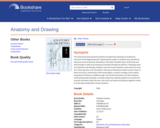
This instructive book presents excellent annotated line drawings of anatomical structure for the beginning artist. Explaining the subject in simple terms and with an extensive series of dynamic illustrations, the author identifies parts of the body and demonstrates a wide array of physical activities through his sketches. Following notes on proportion and drawing, chapters cover the human skeleton, head and neck, torso, arm, hand, leg, foot, and musculature. Numerous illustrations depict various views of these structures, movements of the human figure, as well as changes in the relative proportions of features at different ages. One of the best books in its field, Anatomy and Drawing helps demystify a complex subject by enabling students to visualize the muscles and bones under the skin, and covers just about everything a beginner needs to know about drawing the human anatomy.
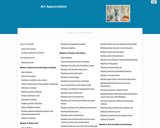
Art Appreciation thoroughly investigates how quality is determined and created by artists in order to evaluate and appreciate art on a deeper level. This course emphasizes why each topic contributes to valuing a piece of art and provides the necessary knowledge to do so. Students are first introduced to the elements and principles of art and the importance of artists’ context and perspective. The course then covers different periods in art history, different techniques in art, and how to research and evaluate art.
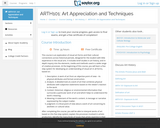
This course is an exploration of visual art forms and their cultural connections for the student with little experience in the visual arts. It includes a brief study of art history and in depth studies of the elements, media, and methods used in creative processes and thought. Upon successful completion of this course, students will be able to: interpret examples of visual art using a five-step critical process that includes description, analysis, context, meaning, and judgment; identify and describe the elements and principles of art; use analytical skills to connect formal attributes of art with their meaning and expression; explain the role and effect of the visual arts in societies, history, and other world cultures; articulate the political, social, cultural, and aesthetic themes and issues that artists examine in their work; identify the processes and materials involved in art and architectural production; utilize information to locate, evaluate, and communicate information about visual art in its various forms. Note that this course is an alternative to the Saylor FoundationĺÎĺ_ĺĚĺ_s ARTH101A and has been developed through a partnership with the Washington State Board for Community and Technical Colleges; the Saylor Foundation has modified some WSBCTC materials. This free course may be completed online at any time. (Art History 101B)

In this art history video Beth Harris and Steven Zucker discuss Paul Troost's House of (German) Art (1933-37) in relation to the Great Exhibition of German Art and the Entartete Kunst (Degenerate Art) Exhibitions of 1937 in Munich.
The House of German Art now exhibits international contemporary art in direct opposition to original National Socialist intent.

This resource is a modification of the Washington Models for the Evaluation of Bias Content in Instructional Materials (2009) that is made available through OER Commons under a public domain license. This resource attempts to both update the content with more contemporary vocabulary and also to narrow the scope to evaluating still images as they are found online. It was developed as a secondary project while working on a BranchED OER grant during summer 2020. It includes an attached rubric adapted from the Washington Model (2009).
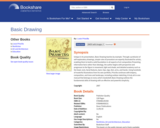
Unique in its presentation, Basic Drawing teaches by example. Through a profusion of self-explanatory drawings, simple rules of procedure are expertly illustrated for artists, enabling them to build a solid foundation in all aspects of art composition.Presenting informative facts rather than ideology, the author begins with perspective and progresses to the figure in movement; light and shade; and detailed anatomy such as the head, neck, facial features, back, hips, legs, feet, arms, and hands. Using hundreds of masterful illustrations from his own portfolio, Priscilla continues with drapery, composition, and trees and landscape, including outdoor sketching. A truly all-in-one manual that belongs on every artist's bookshelf, Basic Drawing outlines the fundamental skills of drawing with an effective and powerful simplicity.
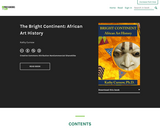
This book aims to act as your map through the world of African art. As such, it will help you define the competencies you need to develop–visual analysis, research, noting what information is critical, asking questions, and writing down your observations–and provide opportunities for you to practice these skills until you are proficient. It will also expose you to new art forms and the worlds that produced them, enriching your understanding and appreciation.

A new and annotated translation of the French Prime Minister’s memoir of his friend, the most famous Impressionist painter.

Cocaine afflicts many individuals and is potently addictive. Originally hailed as a wonder-drug in the late 19th century, cocaine is now considered an illegal substance. Cocaine’s addictive properties can be attributed to changes in the dopamine reward pathway of the Ventral Tegmental Area and Substantia Nigra, Prefrontal Cortex, Dorsal Striatum, Nucleus Accumbens, Amygdala, Globus Pallidus, and Hippocampus. This drug affects the brain in two processes: binge and crave. The binge process highlights cocaine’s ability to block dopamine reuptake from the synapse resulting in hyperstimulation of the postsynaptic neuron in the dopamine reward pathway. The crave process promotes drug-seeking behavior through conditional and contextual cues. Understanding the effects of cocaine in the brain may grant insight in creating future medication and therapies to treat individuals addicted to this drug.

Color is fundamental to many forms of art. Its relevance, use and function in a given work depend on the medium of that work. While some concepts dealing with color are broadly applicable across media, others are not.

The book offers a blend of theory and practice in guiding readers to apply design thinking principles to solving some of our world’s biggest problems. At the same time, readers are encouraged to become aware of new and emerging technologies that make prototyping and applying solutions a reality.

Digital Foundations uses formal exercises of the Bauhaus to teach the Adobe Creative Suite. All students of digital design and production—whether learning in a classroom or on their own—need to understand the basic principles of design in order to implement them using current software. Far too often design is left out of books that teach software for the trade and academic markets. Consequently, the design software training exercise is often a lost opportunity for visual learning. This revised edition updates the original text for use with Adobe Creative Cloud 2017 software.Order a print copy: http://www.lulu.com/content/paperback-book/digital-foundations-introduction-to-media-design-with-the-adobe-creative-cloud-revised-edition/24461332

How can you draw something if you don’t know what that something looks like? If I were to say “draw a duck from the side, swimming in water, and make it as realistic as possible”, what would it end up looking like? When was the last time you saw a duck? Would thinking of that help? Would the head be the right size in relation to the body? What about the size of the bill, the eyes, and the tail feathers? If I flashed an image of a duck for you to see for a few seconds, would you be able to draw a better representation? Would it be even better if you could be looking at an image of a duck the whole time you were drawing? I am guessing the duck you drew while being able to observe it continuously would turn out the best.
Now, what would happen if you did the same task of drawing a duck, however, you never picked up a pencil and a pencil was never available to you? What if you never drew or wrote anything? How would you hold the pencil and how hard do you push on the paper with it? How long would it take to develop the finite dexterity in your hand in order to draw? Would you need practice drawing various lines even before attempting to draw the duck?
Let’s say I gave you the same task of drawing a duck, however, this time you have a better understanding of what a duck actually looks like. You know how to properly take into account all the visual clues associated with drawing a duck. You know how negative space can help you see not just the duck, but also the area around the duck. You are able to measure the duck image and your drawing with multiple methods for more accuracy. These are all some of the methods typically used by artists to help them “see” the subject when they are in the process of drawing. When you “see” an object as an artist, it makes the process of drawing much easier.
The process of seeing is only one aspect in creating a representation of what you are viewing. Laying down drawing media onto your paper correctly will take some practice. A good analogy of this would be someone who knows all the notes and chords of how to play the guitar, but has never picked one up to play. Once we learn how to “see” our object, we then need to put it into practice by drawing, knowing how to apply the material.
After you have a good grasp of “seeing” the duck and applying material to paper, the second part of “seeing” comes into play, which is comparing. You now have the real duck and you have your drawing of the duck. These may differ. At this point, seeing the subject will aid in comparing the two and how they may differ. If you can see the difference between the two, you are on your way to capturing a truer representation of that duck.
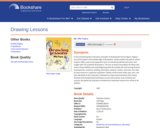
In this essential guide to the basic principles of drawing the human figure, Pogany--one of the leaders of the Golden Age of Illustration--shows readers the path to artistic mastery. With a warm and supportive tone, he seamlessly blends instruction and insight with 375 masterful illustrations. The aim: to build a foundation for those who wish to draw skillfully and easily.Beginning with the humble dot and moving forward to perspective, anatomy, shading, portraiture, balance, motion, and more, this step-by-step resource is a genuine inspiration. Details of the human head, eyes, ears, and feet add depth to the instruction, followed by simple demonstrations that clearly illustrate how fundamental techniques are put into practice. Easy to follow and concise, this guide has long been considered an important resource for artists of all abilities.

Drawing in class is often seen as a distraction to learning. We are here to change that, with a series of activities designed to get both students and teachers benefiting from the power of visual thinking through drawing.
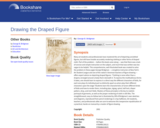
Many art students and professionals have mastered the art of depicting unclothed figures, but still have trouble accurately rendering clothing or other forms of draped cloth. Part of the problem — before this book came along — was that there was a lack of concise and simple instruction on the subject, and much that was written was too vague to be helpful. This comprehensive, well-illustrated book was created to solve the problem.In these pages George Bridgman — a longtime instructor at New York's Art Student League and one of the nation's foremost teachers of figure drawing — offers expert advice on depicting draped figures. "Clothing is none other than a drapery arranged around a body that is beneath it. To express the multitudinous forms it takes, one should learn to express in a direct way the different characters of folds, for each one plays its individual part as distinctly apart as actors play their different characters upon the stage."Students learn the characteristics of seven different kinds of folds and how to render them, including pipe, zigzag, spiral, half-lock, diaper pattern, drop, and inert folds. Mastery of these principles is the key to realistic portrayal of garments, as well as the proper rendering of cloth in still lifes. The straightforward, easy-to-follow text is illustrated by 200 of Bridgman's own sketches and diagrams, reproduced from pencil renderings in crisp halftones. Art students, teachers, and professionals alike are sure to welcome this inexpensive republication of a practical, hands-on manual by a master of figure drawing.
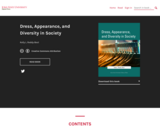
This is a free textbook geared towards college-level courses about dress and identity. The purpose of the book is to help students learn about dress, identity, and how these topics intersect with marginalized communities. Everyone interacts with different people in their day-to-day lives. Having a greater understanding of others can lead to a more equitable, just society. This textbook was created by Kelly L. Reddy-Best and funded by the Miller Open Education Mini-Grant Program at Iowa State University. Extra care and effort were involved to assure you have access to high-quality, affordable course materials. I am interested in your experience using these materials and welcome your feedback. If you find any issues or missing areas in this text or want to offer positive feedback email me at klrb@iastate.edu.